Wisteria in the Moscow region: the best varieties, cultivation, application
Wisteria - climbing tree-liana. It comes from an ancient genus of Leguminous plants, which tend to stretch out their long shoots, twine around supports and grow stiff. The homeland of the shrub is subtropical thickets with high temperatures. To grow a plant in the Moscow region, you should choose the optimal species and know the rules for rooting seedlings and caring for them.
Content:
- Features of the structure of wisteria
- The best varieties for the Moscow region
- Choosing a place and soil for growing
- Breeding methods and planting
- How to properly care for a plant?
- Pruning and preparing for winter
- Possible growing problems
- The use of wisteria in landscape design
Features of the structure of wisteria
The liana attracts interest with its long, sometimes reaching up to 40 cm, gorgeous inflorescences, collected in falling spikelets. Inflorescences are loose, the flowers are in free flight, not closely adjacent to each other. Flowers can be presented in different colors:
- Pink
- Purple
- Blue
- White
- Lavender
Flowering begins in the first month of spring and ends in early autumn. The inflorescences emit a delicate sweet aroma that spreads over large areas. The plant does not differ in rapid growth rates; during the vegetative period of the year it grows no more than 20-25 cm.
An adult full-fledged liana during its life can reach up to 14-18 m in height or in breadth.
The foliage of the plant is represented by a large leaf plate. But its peculiarity is that one sheet contains up to 13-15 small leaves. The foliage does not grow in pairs, but in a checkerboard pattern. In this case, the young have a slight soft pile, but when the plate matures, the fluffiness disappears and the upper surface of the leaf becomes smooth, bare.
The best varieties for the Moscow region
There are only 9 species of different varieties of wisteria known in the world, but each of them has its own varieties. There are the following types of tree liana:
- Chinese - reaches with stems up to 15 meters, which are rapidly twisted counterclockwise. It produces gorgeous inflorescences up to 30 cm long. It is thermophilic and has no frost resistance.
- Abundantly flowering Japanese - produces a huge number of inflorescences, stretching up to 80 cm long. Prefers a southern location, does not tolerate frost.
- Shrub - flowers are represented by a violet shade with a blue color. It is perfectly formed in the form of boles.
- Beautiful - not a tall plant, reaches only 10 m in height. The leaf blades reach large sizes - up to 100 cm long. At the same time, the inflorescences do not differ in significant volumes (up to 20 cm), white. The plant can be either double flowers or a simple form.
All these varieties differ in that they cannot withstand extreme low temperatures. Therefore, all attempts to land in the Moscow region were unsuccessful.Plants did not grow to their optimal size, bloomed poorly and died during the first frost. Therefore, breeders have bred a fairly winter-hardy type of wisteria, called macrostachia.
There are varieties of Makrostakhia that can grow in the Moscow region:
- Blue moon
- Pink ice
- Clara mack
Gardeners who have placed such beauty on their personal plot testify that the plant can withstand even 40-degree frost. But the only condition for high-quality living in central Russia is the shelter of a young plant for a winter stay. The absence of this point cannot say for sure whether the shrub will survive in conditions of a low temperature regime.
Choosing a place and soil for growing
In order to not get a shabby shrub with non-viable buds after planting a plant, it is recommended to choose a proper seedling, a place for planting before planting work. It is necessary to prepare in advance the soil in which the plant will be placed.
In order for the plant to grow into a strong and powerful tree, you should not buy it from your hands, but contact a specialized nursery and purchase a high-quality, strengthened seedling.
It is recommended to purchase a seedling with a closed root system... This is due to the fact that in such conditions the plant will take root faster, it will not acclimatize for a long period. When purchasing, you should carefully examine the seedling - it should not have dark spots, damage or other signs of pests settling on the plant or the attachment of diseases.
After choosing a seedling, you should go to the choice of a place for planting. This procedure requires the following guidelines to be followed:
- The place should be open, not shaded by neighboring fruit plants. The shrub should be in a sunny area, or at least in an area where the sun is present in the morning.
- The site where the vine is going to be placed must be protected from cold northerly winds and penetrating drafts.
- Do not plant wisteria next to other fruit crops. Primarily due to the fact that mature trees will clog young shrubs, absorbing all nutrients and moisture. Secondly, wisteria at a young age grows rather quickly, so it can crush other plants not only by the strength of the roots, but also by the strength of the vines, which will invariably spread to a nearby plant.
- Before rooting, you should think that wisteria is a climbing plant, it needs support. In the form of a support, you can use the walls of the house or build a gazebo especially for decorative purposes.
The soil for planting a plant should be selected loose, nutritious, saturated with a large number of fertile components. In addition, it is advisable to check before boarding soil acidity - the plant grows well only on slightly alkaline soil with an insignificant lime content.
It should also be borne in mind that groundwater does not lie close under the roots and that the plant is not planted in the lowland. Wisteria does not tolerate marshy soils and prolonged stagnation of water in the root system. In such a situation, the plant will quickly begin to rot and die.
Breeding methods and planting
Wisteria can be propagated in various ways. She takes root quite well in any conditions and is actively growing. The following methods of plant propagation and obtaining a new specimen are distinguished:
- Seeds - harvested seedlings are aged until November and planted in small containers or a home greenhouse. The soil substrate should be well fertilized with top dressing and thoroughly moistened. In addition, you should definitely introduce a small amount of river sand into the ground. After sowing, the planting must be covered with foil and placed in a dark place. The duration of keeping seedlings in such conditions is 1 month.The greenhouse should be periodically opened, ventilating and saturating the soil with nutritious oxygen. When the first shoots appear, the flowerpot is taken out into the sunlight, but the temperature should not exceed +18 .. + 20 C. With abundant germination of seedlings, after the first 2 full-fledged leaves appear on the sprout, a pick is made to a new place of residence. Transplanting into open ground is carried out immediately after the onset of warm days.
- Cuttings - sprouts for planting should be harvested in the last days of autumn. To do this, there are annual healthy and strong seedlings on the plant, which should be cut into a length of no more than 22-25 cm. After that, the seedlings are put together and tied together. The resulting bundle should be placed with its underside in moist soil and placed in a dark, cool room. In early March, the prepared seedlings should be taken out and planted in a greenhouse for growing. Also, the procedure can be carried out directly when planting in open ground under plastic cans. When the first leaves appear on the cuttings, the shelter should be removed and grown as a full-fledged plant.
- Layers - reproduce in a similar way in the autumn. For this, a strong, strong, healthy shoot, which has not yet had time to stiffen, is chosen on the mother liquor. It is necessary to make a longitudinal cut on it, which should be directed deep into the soil and fixed in this position. In order for the shoot not to bend out of the ground to its original position, it should be pinched and buried in the ground. As the cuttings take root, on the lower part of the plant, in those places where the buds were, the root system will grow, and new young shoots will appear above the ground. In the spring after suffering frosts, young bushes can be detached from the mother bush and planted in a new place of residence.
Reproduction of wisteria is not difficult, therefore, if necessary, you can remove a young seedling and plant it in a predetermined place. During landing, certain requirements must be observed:
- Planting should be done only in spring. It is definitely recommended to wait out the moment of return frosts, due to the fact that young plants are not adapted to winter cold and easily die when the temperature drops.
- In the selected area, recesses for planting are prepared in advance. The hole should correspond to the optimal dimensions of 60x60 cm. It is required to orientate for the size of the hole on the root system - the deepening in the ground should be 2 times larger.
- Drainage is laid out at the bottom of the recess. It is necessary to eliminate stagnant moisture near the roots. Small pebbles, broken brick fragments or gravel are perfect for this.
- To get a seedling from a familiar place, you need to slightly water the plant in a flowerpot. In this case, the bush will easily be pulled out of the container with a whole lump.
- The transplant is carried out with a whole lump in order not to damage the root system. Prepared nutritious soil is sprinkled on top, saturated mineral fertilizers.
- Additionally, the soil near the base of the plant should be compacted manually.
Further care of the plant is carried out as during normal growth. The main thing is to follow all the instructions so that the plant gains mass and stretches upward.
How to properly care for a plant?
Frost-resistant wisteria is a rather capricious plant. Therefore, it is recommended to approach the care of the shrub very carefully and scrupulously. Otherwise, the plant may wither and die. Watering the bush is carried out in moderation. In order to navigate for irrigation, you should monitor the state of the soil substrate near the base of wisteria. The soil should be constantly moist - not wet or swampy.
In the summer months when the air temperature is elevated, it is recommended to increase the frequency and volume of the introduced nutrient moisture.
If it is not enough to introduce moisture, then the inflorescences can crumble, and the foliage can dry out. With the onset of the autumn months, watering is gradually reduced. It is imperative to carry out loosening and weeding. The first procedure is necessary to improve oxygen penetration to the rhizomes and better moisture absorption during watering. Weeding is required to eliminate weeds that can kill a young seedling.
To retain nutrient moisture for a long period of time, the base of the plant is recommended in addition mulch dry grass or sawdust. It is necessary to introduce nutrients during the growing season. The procedure requires the use of both commercial mineral fertilizers, and organic feeding as aged in water mullein.
Pruning and preparing for winter
So that the tree-like vine not only stretches up, but also grows in different directions, it is recommended to carry out periodic pruning. Wisteria lends itself well to forming a decorative crown. Therefore, it can be modeled into various compositions. If it is necessary to grow the plant in the form of a standard tree, one trunk should be left, all other shoots should be cut off. And after the plant reaches the optimal level, form a decorative crown.
To obtain climbing vines, you should eliminate all running side shoots and try to provoke the growth of the shrub only upward, directing the shoots in the right direction.
Pruning mainly consists in the fact that the lateral processes that stick out in different directions should be eliminated. Cut off young shoots that stretch upward by 30 cm, so that numerous inflorescences begin to form on them for the next vegetative period. When growing wisteria in the Moscow region, it is recommended that both young seedlings and adult plants be removed from the support and covered for the winter, to protect the shrub during periods of a strong decrease in temperature. Otherwise, if the shrub is not covered, the plant can die safely.
When carrying out the procedure, it is recommended to well spud the trunk circle and pour mulch on top. This action will protect the vine root system from freezing. After that, all the shoots are carefully removed from the support and laid out in a circle near the base. From above, the plant is covered with fallen leaves and covering material. When the snow falls, it is worth throwing a large snowdrift of snow over the shelter. This will further protect the shrub from low temperatures and frost.
Possible growing problems
When growing and not performing proper care, the plant feels various ailments on itself, problems with appearance and condition appear. There are the following growing problems and methods for their elimination:
- No flowering - may be due to improper planting, as well as a lack of nutrient input or improper pruning. If you apply a large amount of nitrogen-containing fertilizers, you can provoke the growth of green mass and the absence of inflorescences.
- The foliage begins to turn yellow and lose its rich color - this indicates that the shrub is affected by chlorosis. The reason lies inside the soil - it is saturated with alkali. In addition, the landing site was chosen incorrectly. To eliminate the problem, it is recommended to apply an iron fertilizer.
- The foliage is affected by spider mites or aphids - should be applied chemical insecticide by spraying over foliage and inflorescences.
- The shrub begins to wither and die - there is a possibility of excessive moisture in the soil substrate, lack of drainage during planting or high groundwater levels. In this situation, a transplant is required.
In addition to these problems, wisteria may suffer from a lack of oxygen supply to the rhizomes.Therefore, the plant should periodically loosen the soil substrate near the base.
The use of wisteria in landscape design
Gardeners love to use wisteria in the implementation of their landscape ideas. The only drawback of the plant is that it is difficult to grow it in the climatic conditions of central Russia, in the Moscow region into a large, climbing plant.
Therefore, the plant is excellently used to decorate a personal plot in the following compositions:
- For decorating terraces, gazebos or walls of houses.
- For growing in wooden tubs or large flowerpots as a standard tree.
- To create original alleys, consisting only of the flowing branches of wisteria.
In addition, many skilled gardeners are trying to grow wisteria at home in small bonsai-shaped flowerpots. The spectacle turns out to be interesting and original. If desired, such a shrub can be exposed to the open air in the summer.
Thus, wisteria is an interesting plant that can be modeled according to your own taste, decorating your own plot with a plant in different variations. The main thing is to fulfill the conditions of planting and growing for high-quality growth, to monitor the general condition of the plant. Possible problems should be eliminated when leaving immediately upon detection, without waiting for the death of the entire bush.
More information can be found in the video:



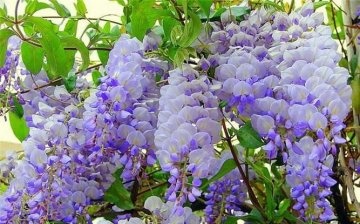
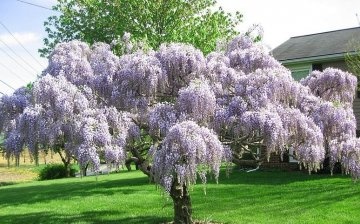
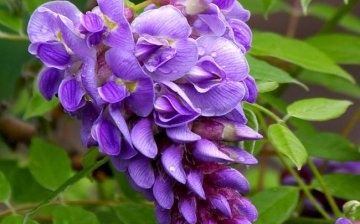
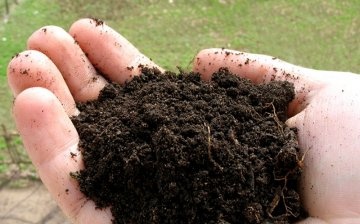
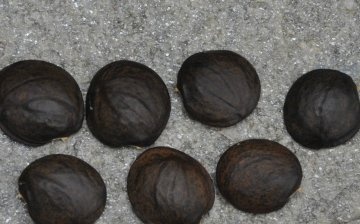
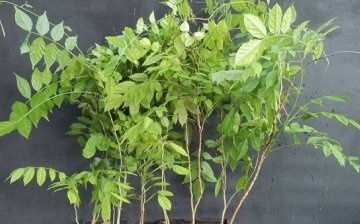
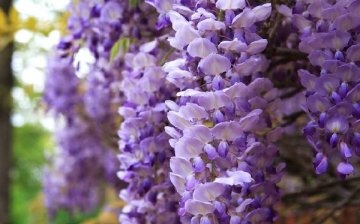
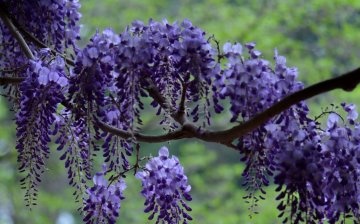

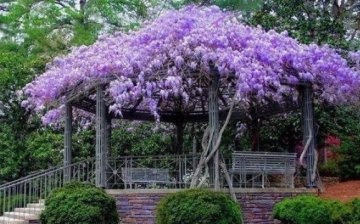











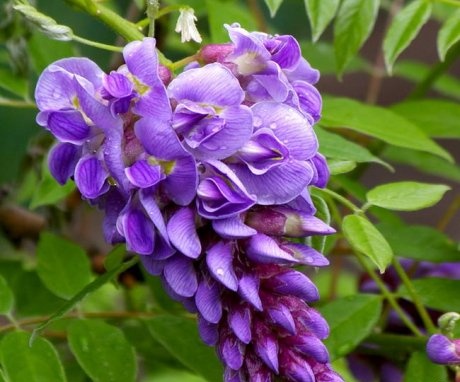
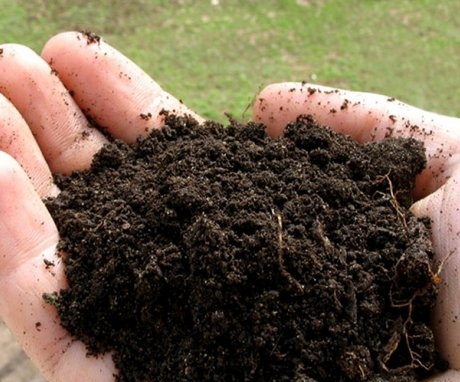
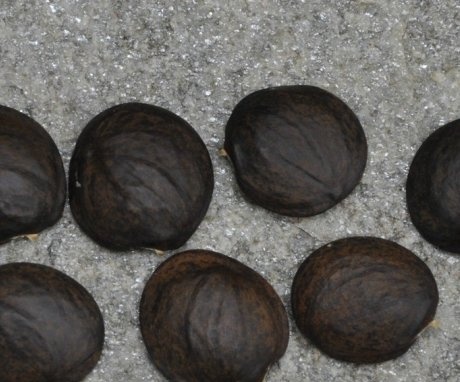
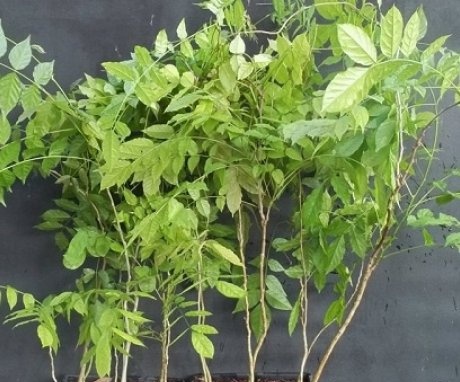

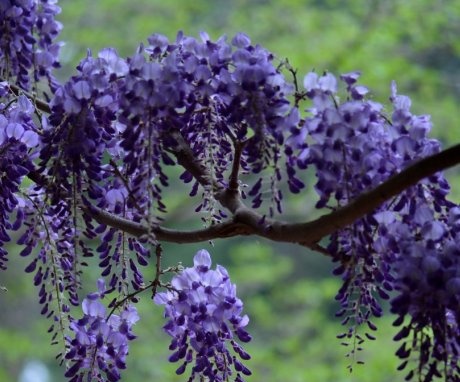
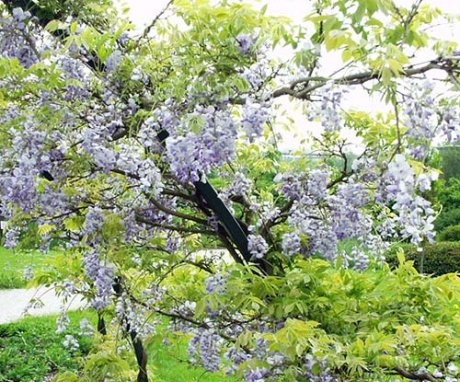
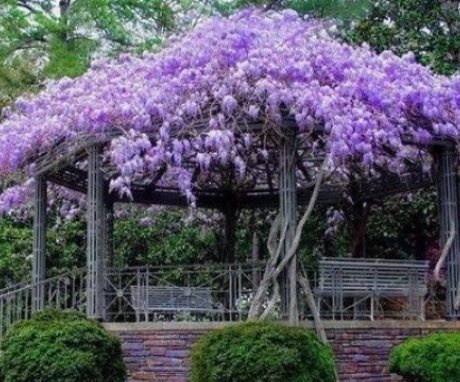
With wisteria, we have renewed an old apple tree that has dried up, and now it is a flowering tree, a normal support for a vine.
We worry only about the fragility of the old tree, but wisteria is not such a heavy vine.